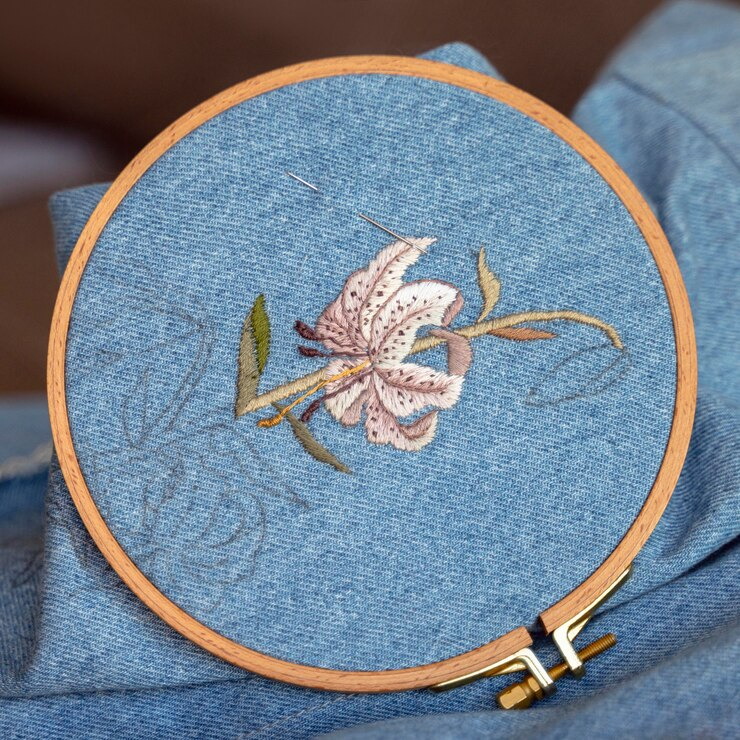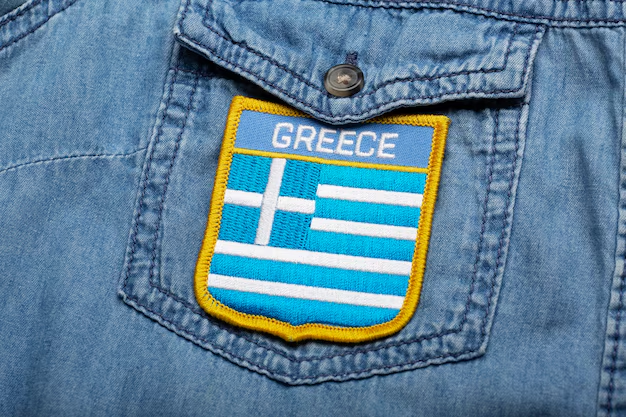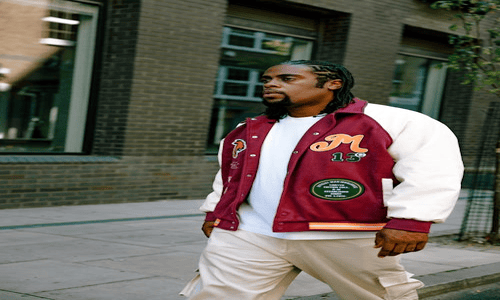Embroidery vs Patch: Which Is the Better Option?

Ordering custom patches in bulk – Everything you need to know
August 19, 2024
Clothing with Patches – Why Are They Trending In Today’s Fashion Scene
September 20, 2024If you’re thinking about adding a personal touch to your clothes and accessories, there are two popular options: embroider something or attach a patch. Whether you’re customizing garments for business, sports teams, or personal style, choosing between embroidery and patches can be challenging. Both have unique benefits, so how do you decide which option is better for your needs?
In this blog, we’ll look closely at the embroidery vs patch debate, explore their benefits, and highlight the key differences. Ready to get started?
What Is Embroidery?

Source: Freepik
Dating back thousands of years, embroidery is a popular technique for decorating fabric. The process uses needles and thread to decorate or personalize clothing. Before, embroidery was done by hand, but now, high-tech machines can embroider just about anything.
What are the benefits of direct embroidery?
Embroidered designs offer a professional finish that stands the test of time. This makes them an excellent choice for uniforms, business attire, and corporate giveaways, providing a polished, high-end appearance. Additionally, the size, shape, and texture can be customized to fit specific branding and style preferences.
What Are Patches?

Source: Freepik
Patches are pieces of fabric that are sewn or ironed onto another fabric. They come in different forms, including embroidered, chenille, woven, felt, and printed, and can be applied to almost any fabric type. Moreover, custom patches offer design flexibility, enabling organizations to create patches that align with their needs.
What are the benefits of patches?
Patches offer incredible versatility, as they can be applied to nearly any fabric, including materials that may not be suitable for direct embroidery. This makes them a practical choice for various applications. Moreover, some of the best patches available are often less expensive than direct embroidery, especially when ordered in bulk. Additionally, they can be reused as most patches can be removed and reapplied.
Direct Embroidery vs Patch: Key Differences

Source: Freepik
When stuck in the patch vs embroidery dilemma, it’s crucial to understand the fundamental differences between them. While they both serve the same purpose, the outcomes vary significantly. Understanding their key differences will help you make an informed decision that aligns with your goals, style, and budget.
Let’s look at each in detail.
1. Application Method
Direct embroidery stitches a design directly onto the fabric using thread. This process is done with precision and often with the help of computerized embroidery machines to create high-quality, intricate designs. The result is a permanent design that becomes part of the fabric itself. Once embroidered, a design cannot be removed without damaging the fabric.
Conversely, patches are separate pieces of fabric that are either sewn, ironed, or glued onto the garment. Due to these application methods, patches are applied externally and not integrated into the base fabric like embroidery. This means they can be removed and replaced without significantly damaging the garment.
2. Cost
Direct embroidery can get pricey, especially for detailed and multi-colored designs. Since it requires skilled labor and specialized machines, the cost of embroidery typically increases based on the complexity of a design. Large designs or logos with fine details take more time to produce, further driving up the cost. Embroidery might be cost-effective for small projects, but bulk orders may become expensive.
Patches are generally a more cost-effective option, particularly for bulk orders. The production of patches tends to be less costly than embroidery. Once a patch design is created, it can be reproduced more easily and applied to multiple garments with less effort.
3. Design Flexibility
While embroidery allows for a wide range of designs, it has limitations. Those with fine lines, gradients, or shading are more difficult to achieve. Additionally, certain textures or 3D effects are difficult to replicate with thread alone. The size of the design also plays a significant role in embroidery, as big designs may become bulky and uncomfortable on the fabric.
Patches provide a lot more flexibility when it comes to design. Since patches are produced separately from the garment, they can incorporate various textures, colors, and materials that may not be achievable through embroidery. The ability to produce patches with different levels of detail, textures, and even 3D elements makes them more adaptable to varying needs. For example, consider chenille patches. They are perfect for bold, modest designs like varsity letters, mascots, or big logos. Their plush, textured surface is best for designs with minimal detail, offering a subtle, eye-catching appearance.
4. Maintenance and Care
The thread used in embroidery is designed to be durable and can withstand regular washing without losing its shape or color. However, sometimes, it can cause garments to shrink or wrinkle. Be careful not to iron directly over embroidered designs because it can damage the thread.
Patches are durable and typically easy to care for. Once applied, they remain firmly in place, wash after wash. High-quality patches are rarely damaged if proper care is taken during washing and ironing.
5. Fabric Suitability
Not all fabrics are suitable for embroidery. Thin or delicate materials like silk or lightweight cotton may not hold up well to the weight of the stitching. The embroidery thread can pull on the fabric, causing it to pucker or distort. Embroidery works best on thicker, more durable fabrics like denim, canvas, or heavy cotton.
On the other hand, patches can be applied to various fabrics, including sturdy and delicate materials. Since the patch is applied externally, it doesn’t put the same stress on the fabric as embroidery does. This makes them more suitable for lighter or more delicate fabrics, offering more versatility in fabric compatibility.
Embroidery vs. Patch -The Final Verdict
Your decision between embroidery vs patch ultimately depends on your needs, preferences, and budget. If you’re looking for a durable, cost-efficient, and versatile solution, then patches may be a suitable option. However, to make the most of the patches, you need to find a reliable patch provider.
At Anything Chenille, we offer a wide selection of high-quality patches to suit all your customization needs. We ensure premium craftsmanship and durable designs that stand out. Talk to one of our company representatives for more details about our custom patches.




